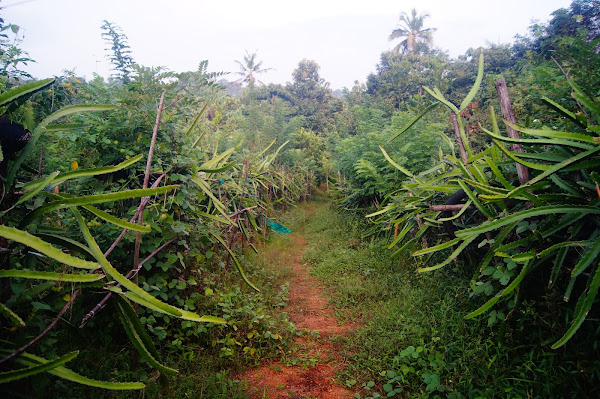Quick read; Earthworms and everything they do
 |
| AI generated images of earthworms |
Affectionately known as njanjool or mannira, earthworms are humble creatures that play a great role in maintaining soil health and farm productivity. These underground helpers work tirelessly with farmers to create a fertile and thriving ecosystem.
Earthworms burrow through the soil, creating a network of tunnels that allow air and water to penetrate deeper into the earth. This aeration and water infiltration improve soil structure, enabling roots to grow stronger and deeper. As a result, crops become more resilient to droughts and floods.
They consume organic matter and excrete nutrient-rich castings, which act as natural fertilizers. These castings contain essential micronutrients, such as nitrogen, phosphorus, and potassium, promoting healthy plant growth. By recycling nutrients, earthworms reduce the need for synthetic fertilizers, minimizing soil pollution and environmental harm.
Additionally Earthworms' burrowing activities help hold soil particles together, reducing erosion and soil loss. This is particularly crucial in areas prone to heavy rainfall or strong winds. By stabilizing the soil, earthworms protect the topsoil layer, preserving its fertility and productive capacity.
Farm Health Benefits
1. Increased Crop Yields: Earthworms' contributions to soil health lead to improved crop yields and better plant growth.
2. Reduced Soil-Borne Diseases: Earthworms' castings have antimicrobial properties, helping to suppress soil-borne pathogens and reducing the need for pesticides.
3. Enhanced Biodiversity: Earthworms support a diverse soil ecosystem, fostering a balanced environment that promotes beneficial microorganisms and insects.
They are indeed the underground heroes of farming. By working together with farmers, these tiny creatures significantly enhance soil health, fertility, and overall farm productivity. As we continue to face environmental challenges, embracing earthworms as allies in sustainable agriculture becomes increasingly important. By supporting and conserving earthworm populations, we can cultivate a healthier planet, one soil layer at a time.
 |
| More AI generated images of earthworms |
Let's look into some of their amazing features:
- Earthworms can consume up to half their body weight in soil and organic matter daily, recycling nutrients and improving soil fertility.
- Earthworms create complex burrow networks, with some tunnels extending up to 6 feet underground, aerating soil and improving water infiltration.
- Earthworms are hermaphrodites, producing both eggs and sperm, but still need to mate to reproduce. They can lay up to 20 cocoons per year, each containing 2-5 baby worms.
- Earthworms can move up to 6 inches per minute, which may seem slow, but is impressive considering their tiny size.
- Some earthworms can live up to 10 years in captivity, remarkable for their small size.
- They don't have eyes, but can sense light and dark, helping them navigate underground.
- Earthworms have 150-200 body segments, each with muscles, nerves, and setae (bristles), allowing them to move and burrow efficiently.
- They help regulate soil pH by excreting calcium carbonate, reducing acidity and promoting a balanced soil environment.
- Earthworms' castings contain beneficial microorganisms, which help break down organic matter, fight plant diseases, and promote soil health.
- They have been around for over 600 million years, with fossil evidence showing they've remained largely unchanged since the Cambrian period.
In our forest farm, we get excited everytime we spot them! They act as sensors who inform that our farm is doing good.





Comments
Post a Comment